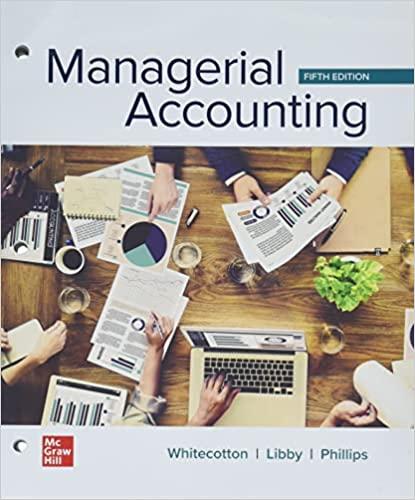thanks in advance!

Chec 1 Problem 20-8AA Merchandising: Preparation of a complete master budget LO P4 Near the end of 2019, the management of Dlmsdale Sports Co., a merchandising company, prepared the following estimated balance sheet for December 31, 2019 100 points eBook References DIKSDALE SPORTS COMPANY Estimated Balance Sheet December 2019 Mests Canh $6,000 Accounts receivable 525,000 Inventory 150.000 Total current Assets 5 711.000 Fiquipment 540,000 Least Accumulated depreciation 63,500 Equiperat, tit 472,500 Total asset $1,183,500 Liabilities and quity Accounts payable $360,000 Hank loan payable 15,000 Taxes payable due 3/15/2020) 90.000 Total liabilities 5 465,000 Common stock 472,500 Retained earning 245,000 Total stockholders' equity 210.500 total liabilities and equity 51.183.500 To prepare a master budget for January, February, and March of 2020, management gathers the following information, a. The company's single product is purchased for $30 per unit and resold for $55 per unit. The expected Inventory level of 5,000 units on December 31, 2019, is more than management's desired level, which is 20% of the next month's expected sales in units) Expected sales are January, 7000 units, February 9,000 units; March 11,000 units, and April 10,000 units b. Cash sales and credit sales represent 25% and 75%, respectively, of total sales of the credit sales, 60% is collected in the first month after the month of sale and 40% in the second month after the month of sale. For the December 31, 2019, accounts receivable balance, $125,000 is collected in January 2020 and the remaining $400,000 is collected in February 2020, c. Merchandise purchases are paid for as follows: 20% in the first month after the month of purchase and 80% in the second month Che 1 c. Merchandise purchases are paid for as follows: 20% in the first month after the month of purchase and 80% in the second month after the month of purchase. For the December 31, 2019, accounts payable balance, $80,000 is paid in January 2020 and the remaining $280,000 is paid in February 2020. d. Sales commissions equal to 20% of soles are paid each month. Sales salaries (excluding commissions) are $60.000 per year. e. General and administrative salaries are $144,000 per year. Maintenance expense equals $2,000 per month and is paid in cash. f. Equipment reported in the December 31, 2019, balance sheet was purchased in January 2019. It is being depreciated over eight years under the straight-line method with no selvage value. The following amounts for new equipment purchases are planned in the coming quarter January, $36,000; February $96,000; and March, $28,800. This equipment will be depreciated under the straight- line method over eight years with no salvage value. A full month's depreciation is taken for the month in which equipment is 9. The company plans to buy land at the end of March at a cost of $150,000, which will be paid with cash on the last day of the month. h. The company has a working arrangement with its bank to obtain additional loans as needed. The interest rate is 12% per year, and interest is paid at each month-end based on the beginning balance. Partial or full payments on these loans can be made on the last day of the month. The company has agreed to maintain a minimum ending cash balance of $25,000 at the end of each month The income tax rate for the company is 40%. Income taxes on the first quarter's Income will not be paid until April 15. Book Required: Prepare a master budget for each of the first three months of 2020: include the following component budgets: 1. Monthly sales budgets. 2. Monthly merchandise purchases budgets. 3. Monthly selling expense budgets. 4. Monthly general and administrative expense budgets, 5. Monthly capital expenditures budgets. 6. Monthly cash budgets 7. Budgeted Income statement for the entire first quarter (not for each month). B. Budgeted balance sheet as of March 31, 2020. 1 Calculation of Cash receipts from customers January February March 100 points Sales in units Selling price per unt Total budgeted sales Cash sales Sales on credit 25% 75% Boon March 31 Receivable References Collected in Total January February 525.000 $ 125,000 $ 400,000 March $ Accounts Receivable January 1 Credit sales from January February March Total collection of receivables 0 0 125.000 400,000 $ 0 $ Total cash receipts from customers January February March Collections of receivables 1 DIMSDALE SPORTS CO. Cash Budget January February, and March 2020 January February 100 March Beginning cash balance Total cash available Cash payments for References 0 Total cash payments Preliminary cash balance Ending cash balance Loan balance January February March Loan balance. Beginning of month Additional loan can repayment) Loan balance - End of month 1 Required 1 Required 2 Required 3 Required 4 Required 5 Required 6 Required 6 Calc Cash Bud Required 7 Required 8 Budgeted Income statement for the entire first quarter (not for each month). 100 points BOOM DIMSDALE SPORTS CO. Budgeted Income Statement For Three Months Ended March 31, 2020 Sales Cost of goods sold Gross profit Operating expenses Sales commissions expense Sales salaries expense General administrative salaries Depreciation expense Inventory References 0 0 Total operating expenses Income before taxes Income tax expense Net income 0














